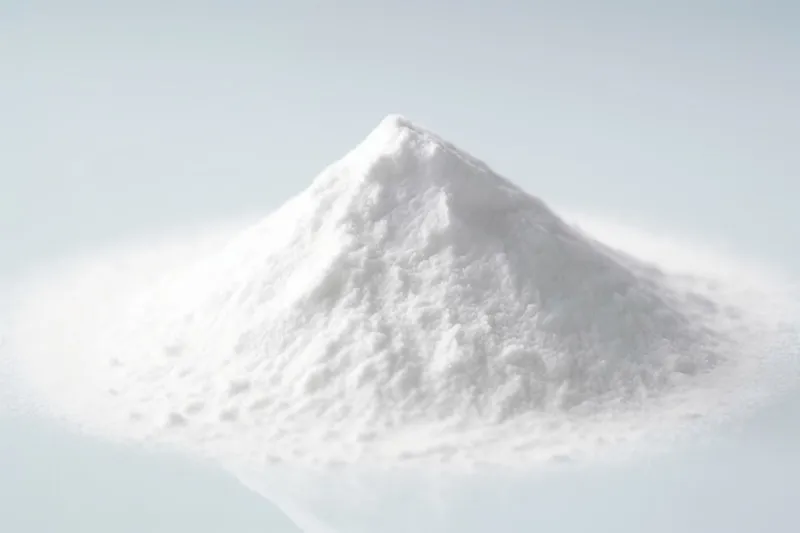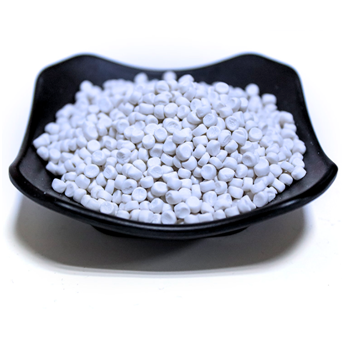Calcium carbonate is the first choice of filler in plastic industry, widely used in plastic film, profiles, tubes, plastic knitting and artificial leather and other plastic industrial production, and can replace the expensive white pigment to play a certain role in whitening, to improve the surface luster of the product and the surface flatness and so on.
So, what are the indexes of calcium carbonate for plastics industry? Why are these indicators required?

Calcium content
Calcium content is an important quality technical index of calcium carbonate. Modified masterbatch requires high calcium content of calcium carbonate, generally above 98%. The higher the calcium content, the more stable the processing performance of calcium carbonate. When the calcium content is low, it will increase the content of heavy metals and other non-metals and other impurities, which not only affects the use of calcium carbonate, but also affects the processing technology, affects the quality of products or causes harm to the processing equipment.

Whiteness
The whiteness of calcium carbonate directly affects the whiteness and coloring of the modified masterbatch. The whiteness requirement of calcium carbonate for modified masterbatch is very strict. At present, the whiteness of calcium carbonate for 400 mesh should be more than 95%, and the whiteness of calcium carbonate processed by some ores can reach about 97%. Some modified masterbatch manufacturers in order to make the product whiteness increase, often add fluorescent whitening agent, to achieve the effect of increasing whiteness. However, due to the fluorescent whitening agent chemical components at high temperatures, high shear decomposition reaction, if the fluorescent whitening agent species selection is not appropriate or add too much, not only to make the product decomposition of the yellowing, but also does not appear to be dispersed or cohesion phenomenon of agglomeration. Fluorescent whitening agent related to health and safety, contact with the human body of plastic products, will produce a certain degree of irritation, should not be used.
Color is also a very important technical indicators of calcium carbonate, temperature and color determinants are the structure and origin of the ore. These factors will directly affect the colorability of plastic products, affecting the color and gloss of plastic products. Therefore, the whiteness and hue of calcium carbonate are important technical indicators that cannot be ignored.
Moisture and volatile matter content
The raw materials of calcium carbonate – natural marble, calcite, etc., generally do not contain structural water. After being processed into ultrafine powder, it is easy to be damp and absorb moisture water during processing, storage and transportation. Calcium carbonate sometimes contains traces of volatile substances, which can affect the modified masterbatch and plastic products if the content is too high.
Moisture and volatile content in calcium carbonate should be controlled at about 0.3%, the actual application, the product moisture content ≥ 0.3%, it is easy to affect product quality, so that the product surface roughness, bubbles, burning, decomposition and other phenomena. Therefore, it is very important to control the moisture content on the quality of the modified masterbatch, and the commonly used method is to use high-speed mixer heating and drying to eliminate moisture.
In the production of calcium carbonate high content filler modified masterbatch, conditions try to avoid the use of water tanks infiltration pull strip cutting and water ring granulation process, the use of crawler drive mesh dry granulation process and grinding surface hot cutting granulation process, can be under the premise of improving the production output, to minimize the modified masterbatch moisture and volatile content, to ensure the quality of the modified masterbatch products.
Particle size distribution
The particle size distribution of calcium carbonate is an important quality control index for modified masterbatch. Particle size analysis of inorganic mineral powders is commonly used in simpler sieving methods, and the specifications commonly used in sieving methods are expressed in “mesh”. The so-called mesh is the number of holes per inch of the sieve. However, the more accurate and scientific method of particle size analysis is to use the actual size of the measured particles, expressed in microns (μm).
Sieving method is one of the most traditional particle size analysis method, that is, the dispersibility of good ultra-fine powder with a certain number of mesh sieve sieve, sieve through the sieve and the weight ratio of the sifted powder that is the sieve rate. Commonly used standard sieve finest 500 mesh (equivalent to 25μm or so), the new electrodeposition screen can be screened as small as 5μm (2500 mesh) of the powder, but the screening time is long, easy to clogging. For ultrafine powders smaller than 10μm (1250 mesh), using the sieving method, it is difficult to use for particle size analysis and detection.
In practice, the particle size distribution range of calcium carbonate and other granular materials have large fluctuations, the narrower the particle size distribution range, the more stable the performance of the material, the wider the particle size distribution range, the poorer the performance of the material. For example, 1250 purposes of calcium carbonate, the particle size should be about 10μm, if the particle size distribution in the 5 ~ 38μm, although the theoretical calculation of the average particle size can be close to 10μm, but due to the small particle size, the specific surface area is large, easy to cohesion into a group; and the particle size of the large products caused by the surface roughness and other phenomena, so it’s processing performance, mechanical properties, etc. will be affected.
Particle shape
The particle shape of calcium carbonate is divided into polygonal, flat, prismatic, rectangular, long rod, other irregular and other particle shapes according to the mineral structure.
The particle shape of calcium carbonate has a great influence on the processing technology, product quality, melt fluidity and mechanical properties of modified masterbatch. Polygonal, polygonal, rectangular shape of calcium carbonate in the modified masterbatch processing melt fluidity is good, easy and coupling agent coating crosslinking, processing equipment wear and tear is relatively small, the disadvantage is that modified masterbatch applied to plastic products, easy to affect the mechanical properties of plastic products (such as tensile strength, bending modulus, etc.).
Flat and long rod-shaped calcium carbonate particles have a relatively large surface area, in the modified masterbatch coupling agent, plasticizer and other additives need to be increased appropriately. Otherwise, it is easy to cause uneven coating, poor melt fluidity, host power increases, head resistance increases, but also produce overheating decomposition and other phenomena. However, this kind of shape of the material is beneficial to the physical properties of plastic products, can improve tensile strength, bending strength, reduce the shrinkage of plastic products.
Content of other components
Calcium carbonate in the chemical components and metal impurities and other components of the content of calcium carbonate also has a certain impact on the quality of calcium carbonate, in the plastic modification masterbatch and plastic products will have a certain impact on the application. Calcium carbonate generally contains a small amount of magnesium oxide (MgO), silicon dioxide (SiO2), iron oxide (Fe2O3), alumina and trace heavy metals (aluminum, arsenic, mercury, etc.). With the origin and different ores, the other components of the content is also different.
Calcium carbonate in the MgO hardness is small, whiteness is slightly lower than calcium carbonate, chemical stability, processing performance is similar to calcium carbonate, calcium carbonate will not generally have a greater impact on calcium carbonate.
SiO2 belongs to the natural quartzite, its specific surface area is small, good mobility. However, SiO2 has high hardness (Mohs hardness 7), serious wear and tear of equipment, especially in uneven coating or plasticizer dosage, especially prominent. Filled modified masterbatch if used in the production and processing of polypropylene flat wire, the high-speed cutting tool is easy to produce collision and often damage the knife edge, affecting the production and processing.
Fe2O3 in calcium carbonate content is very small, but iron and chemical additives are easy to chemical changes when mixing and processing, Fe2O3 is easy to decompose and turn yellow when heated, affecting the whiteness and appearance of the modified masterbatch, so Fe2O3 is not to be ignored in the modified masterbatch material.
The lower the content of SiO2 and Fe2O3 in calcium carbonate, the smaller the impact on the quality of the modified masterbatch, generally 5% hydrochloric acid can be used to dilute the solution in a glass dish to add calcium carbonate for chemical analysis, and observe the amount of precipitates in the solution to determine the content of SiO2; the color of the solution slightly yellow, indicating that the content of Fe2O3 is more.
